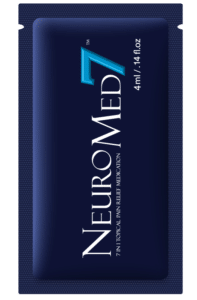Skin Numbing Topical Anesthetic
Lidocaine, tetracaine and benzocaine are all used as as skin numbing topical anesthetic products, such as in creams, gels and sprays. Skin numbing topical anesthetic products are used to block neuronal impulses of pain sensations from localized areas to the brain. These signals tell the brain when something painful is on or entering the skin. In order to lessen or eliminate pain, doctors use skin numbing topical anesthetic creams and gels, such as for needle insertion procedures, dialysis, heart catheterization, minimally invasive cosmetic procedures and others. Skin numbing topical anesthetic creams are also used by people for tattoos, piercings and to reduce the pain, burn and itch sensations caused by some minor skin irritations, burns and insect bites/stings.
What Makes One Skin Numbing Topical Anesthetic More Effective than Others?
Not all skin numbing topical anesthetic products are the same. Some have a reputation of being more effective than others. What makes one more effective over another is its unique formulation. Many formulations of skin numbing topical anesthetic products only include the active pharmaceutical ingredient (API) in a base cream, gel or liquid. The more commonly accepted as effective skin numbing topical anesthetics include ingredients known as drivers. Drivers are those ingredients that are know for their ability to temporarily make the skin more permeable to the introduction of the API included in the skin numbing topical anesthetic product. Those that contain these ingredients have a better chance of performing their pain sensation blocking API and therefore be more effective.
How Do Skin Numbing Topical Anesthetics Work?
Science Description
Lidocaine, benzocaine, tetracaine and the other “caines” alter signal conduction in neurons by blocking the fast voltage-gated Na+ channels in the neuronal cell membrane responsible for signal propagation. With sufficient blockage, the membrane of the postsynaptic neuron will not depolarize and will thus fail to transmit an action potential. This creates the anaesthetic effect by not merely preventing pain signals from propagating to the brain, but by stopping them before they begin.
In Plain English
The API’s included in Skin Numbing Topical Anesthetic creams work by blocking the signals in the nerves at the source that also tell the brain that you are feeling pain. The API’s do this by filtering into a part of the nerve that sends the pain sensation signals. The API block the pain signal in the nerves before they even have a chance to begin.
NeuroMed Skin Numbing Topical Anesthetic Creams include those that contain lidocaine, benzocaine and tetracaine each singly as well as all three in one box. These products all include three known drivers designed to improve API penetration and effect. They are also all supplied in single-use, sanitary, metered dose packets for unique safety.
NeuroMed 7 Single-use, sanitary 4 mL packets – lidocaine – smooth and creamy grit free formula which includes MSM, ethoxydiglycol and propylene glycol


